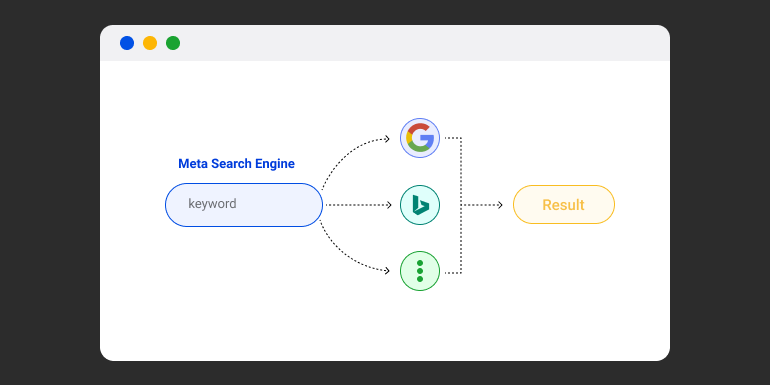White Label Link Building: How Does It Work For SEO Agencies?
Dec 19, 2025

Dec 19, 2025

Dec 18, 2025

Dec 17, 2025

Dec 15, 2025

Dec 15, 2025
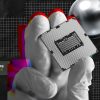
Dec 15, 2025

Dec 13, 2025

Dec 12, 2025
Sorry, but nothing matched your search "". Please try again with some different keywords.

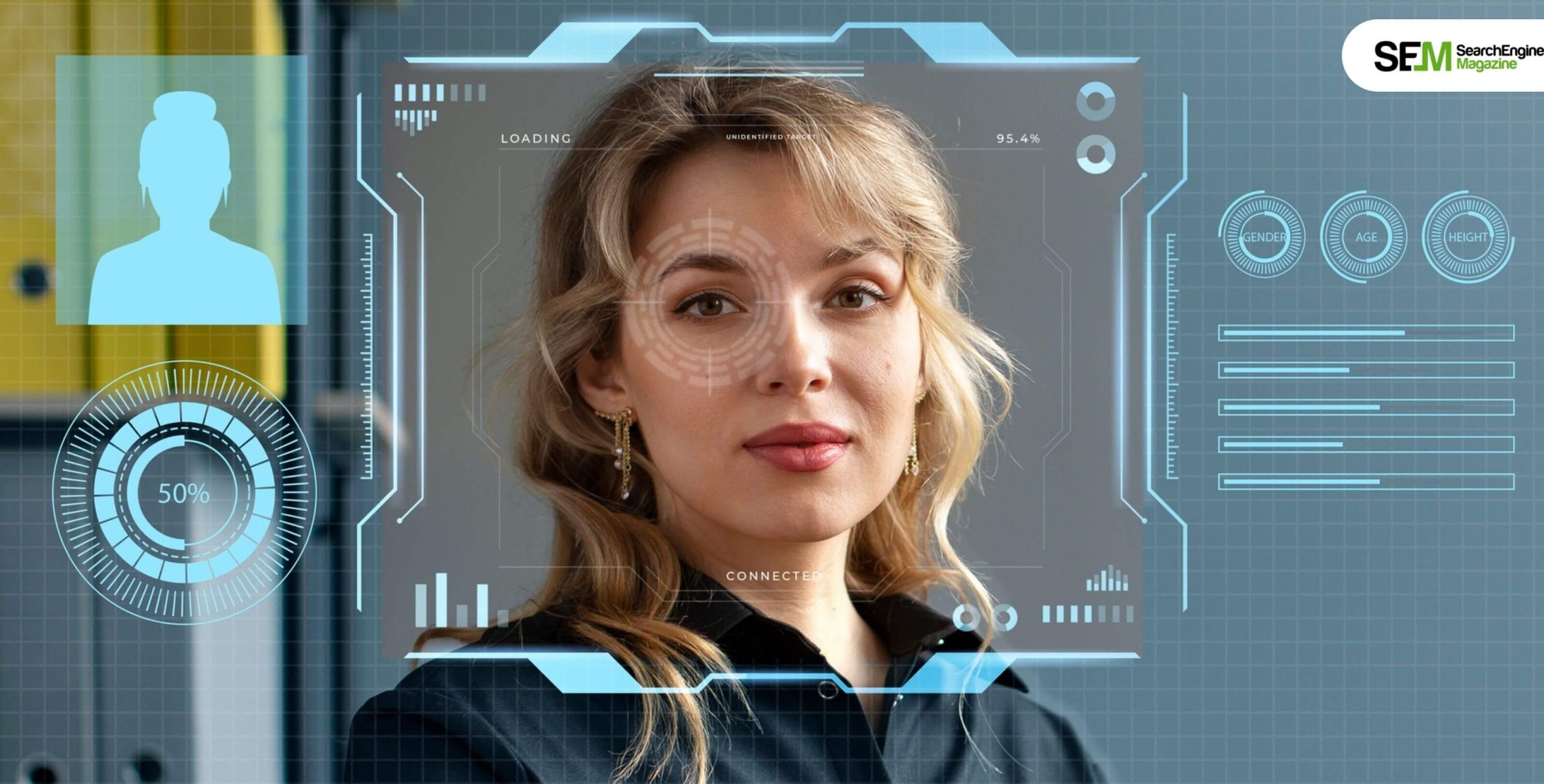
Facial recognition search technology has become a high-profile tool within many industries that changes how humans interact with machines and services.
From security systems to personalized marketing, its application is broad and ever-expanding. This article will explore the technology, key components, processes, and the wide-ranging applications supported.
We discuss the ethics and privacy involved in this technology and the trends and developments that may shape its direction.
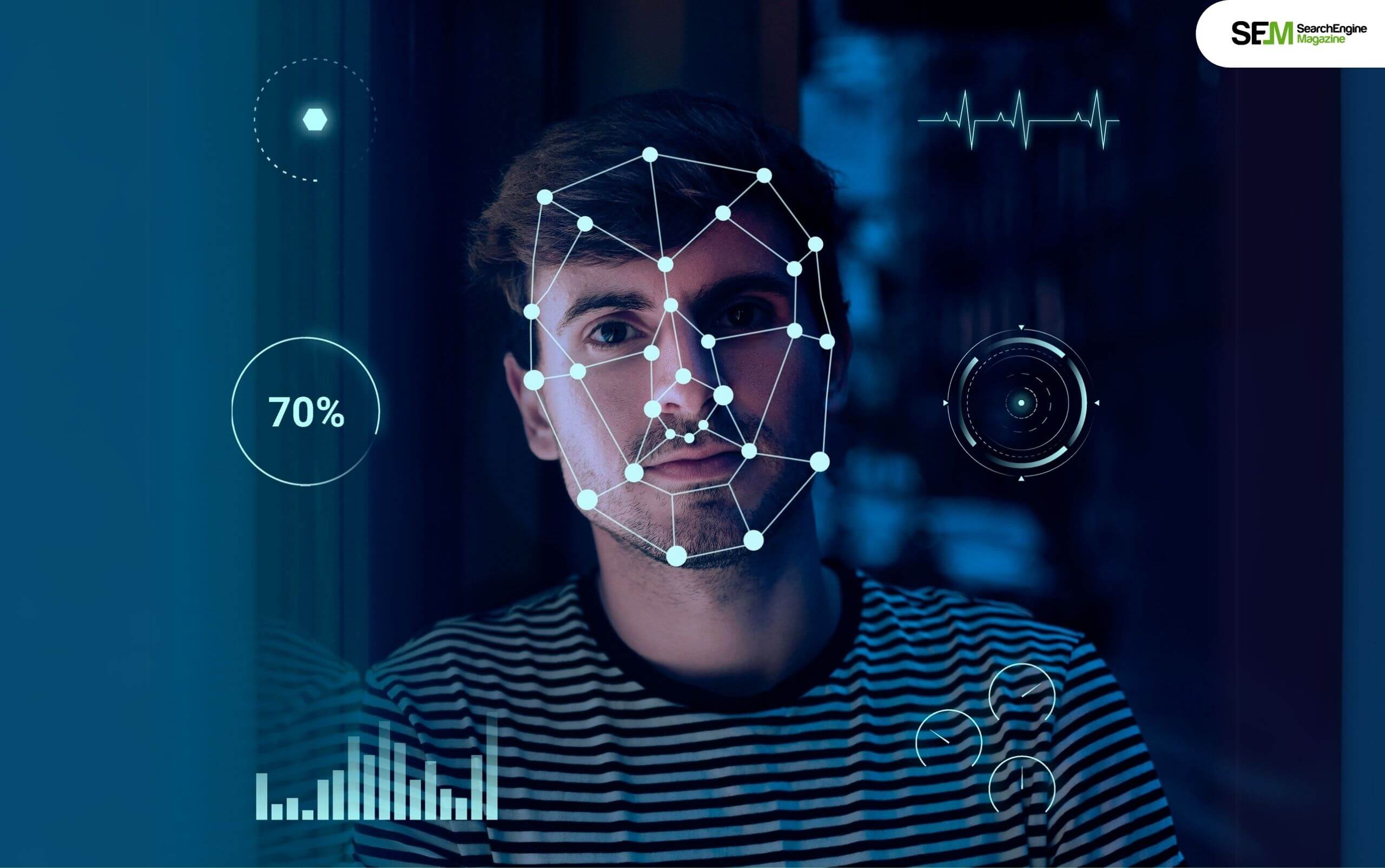
Facial recognition search technology is a biometric identification system that utilizes unique facial features to identify or authenticate an individual.
It takes facial patterns from images or video feeds and matches them with a person’s identity. To the contactless, secure, and efficient identification method, its increasing usage has been observed in various sectors, law enforcement, retail, healthcare, and mobile device security.
Unlike passwords or PIN codes, facial recognition has a smoother and user-friendly experience. The idea behind the technology relies on the unique features of an individual’s face, where the eyes are each other, nose shape, and jawline, to define a unique biometric template.
This technology has become more relevant as more smartphones begin to possess facial recognition abilities, with a higher interest from the government and companies. With this great potential, several challenges must be met to make this work well and ethically.
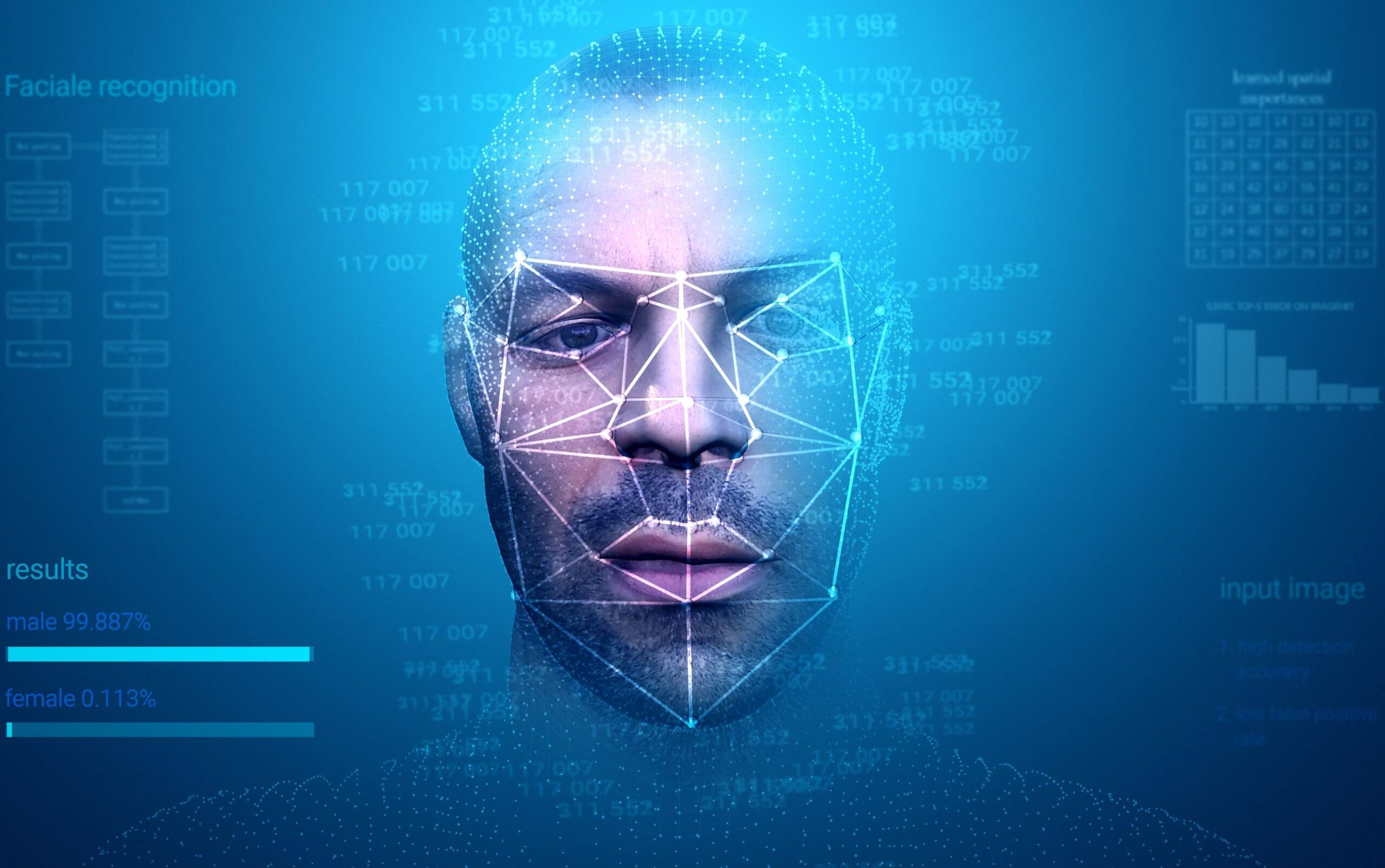
This specific aspect of facial recognition technology contains many central concepts that differentiate it from other biometric identification methods. It is design to match unique face characteristics with databases of known faces to identify and authenticate people.
The technology for facial recognition search, from the detection of basic systems to very high-level, high-performance systems able to run in real-time with astounding accuracy, is quite develop.
The development of facial recognition traces back to the advancements made in computer vision, machine learning, and artificial intelligence. Initially in place were basic identification jobs by facial recognition systems.
Over time, it has evolved from the simple level of algorithms for highly accurate identification under various ranges of lighting, angles, and environments.
The ability to identify people based on subtle differences in their facial features is the key to its function. These systems become more reliable, accurate, and faster as technology advances. Today’s systems can identify individuals even in crowd places, in different environmental conditions, or when faces are partially obscure.
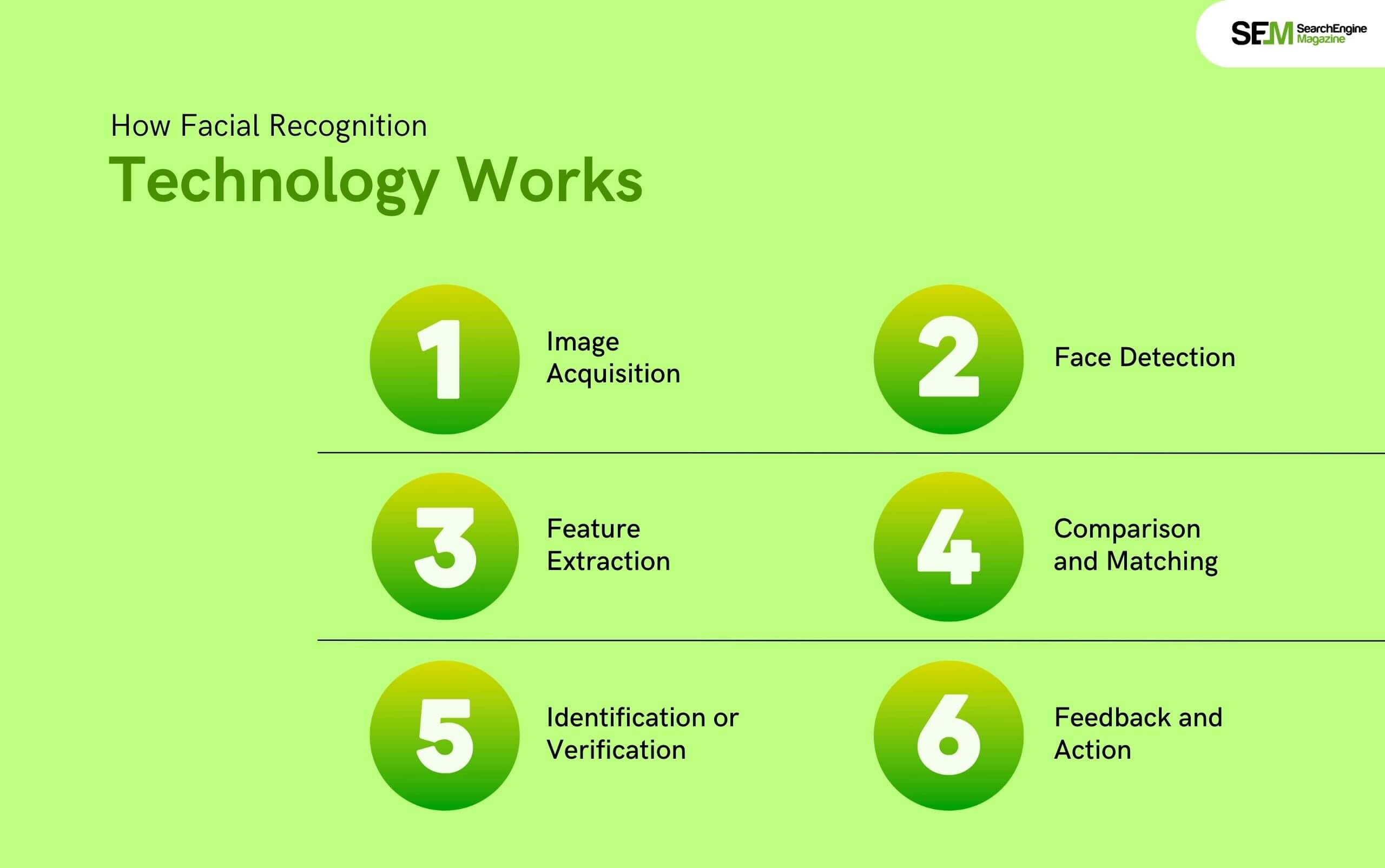
Facial recognition technology relies on image processing and machine learning algorithms to perform its tasks. Let’s break the process down into key steps:
This starts with capturing an image or video feed from a person’s face. This can be done using cameras, ranging from surveillance cameras to smartphones and even dedicate facial recognition devices.
The sharper the image and video feed captured, the more accurate the recognition is. Ideally, the face in the image should be distinguishable, with the capture image not blurring or distorting.
Capturing the image process faces detection, where the identification of a human face in that captured image occurs. Training algorithms on some aspects of a face, the positioning of eyes, a nose, even a human mouth.
In general, even the general features of the face, face detection enables easier facilitation of extracting face features irrelevant information inside this captured picture.
After a face is detect, the system acquires a set of signature features that help identify the individuality of a face. They may include how far apart the eyes are, nose shape, curvatures on the chin, and other slight facial landmarks.
These represent mathematically or in terms of a “faceprint.” Faceprints are usually save within a database where they access and compare.
This faceprint will be matched to a database of faces previously stored and should identify who they are. In the matching process, algorithms find an exact match of faceprints stored in the system.
The more precise the match and the fuller the database is, the better it is to believe that the system will match up correctly. In case of finding a match, they can prove their identity.
There are two types of facial recognition tasks. There are identification and verification. It is when the system compares the captured face with the multiple entries present in the database to determine who the individual is identifying.
The system compares the face with one particular entry to verify if the person is the one they claim to be verified. This step is very important where devices need unlocking or access control.
After the match, the system gives feedback, which can be as simple as allowing access to a system, logging the person’s attendance, or sending a security alert. The response depends on the application in use.
This multi-step process integrates multiple technologies for higher accuracy and faster processing times, including deep learning, convolutional neural networks (CNNs), and neural networks.
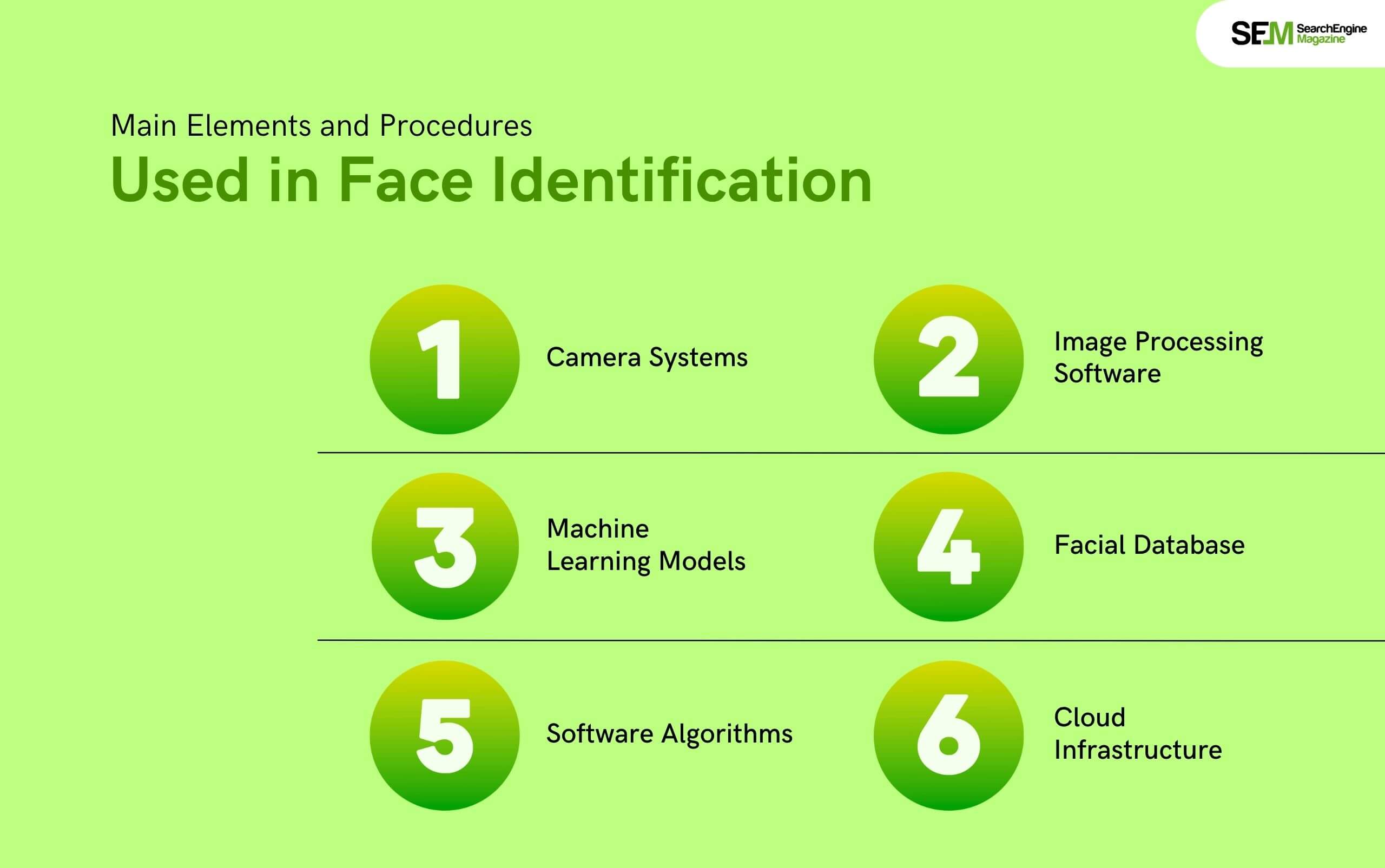
It is important to integrate the procedures along with elements that can be used effectively! Several major elements make facial recognition search work. They include:
A camera is the starting point of interaction for any facial recognition system. The quality and resolution of a camera are essential determinants of whether a system will give accurate results.
Most cameras are usually adding to the system to work harmoniously under various lighting conditions and from different angles.
The picture has been captured, and the system transmits it to computer software called image processing software to check and identify its facial features. This is done using powerful algorithms by using computer vision.
Machine learning is one of the contributions to improving the accuracy of facial recognition systems. In deep learning models, convolutional neural networks trained on large datasets recognize different features and patterns on faces. The models learn with time.
This depends on a stored faceprint database that is sizeable in the process of facial recognition systems. These are the faces of people who have enroll in the system, and this is held in the facial features. The bigger and more diverse the database is, the more accurate it will be in identifying people.
The core of facial recognition is the algorithm that compares faceprints and determines matches. Advanced algorithms will consider factors like facial angles, lighting conditions, and distance between key features in making accurate comparisons.
Most facial recognition systems store huge quantities of facial data and process tasks through cloud infrastructure. This enables scaling up and facilitates central access to big databases for fast and efficient identification processes.
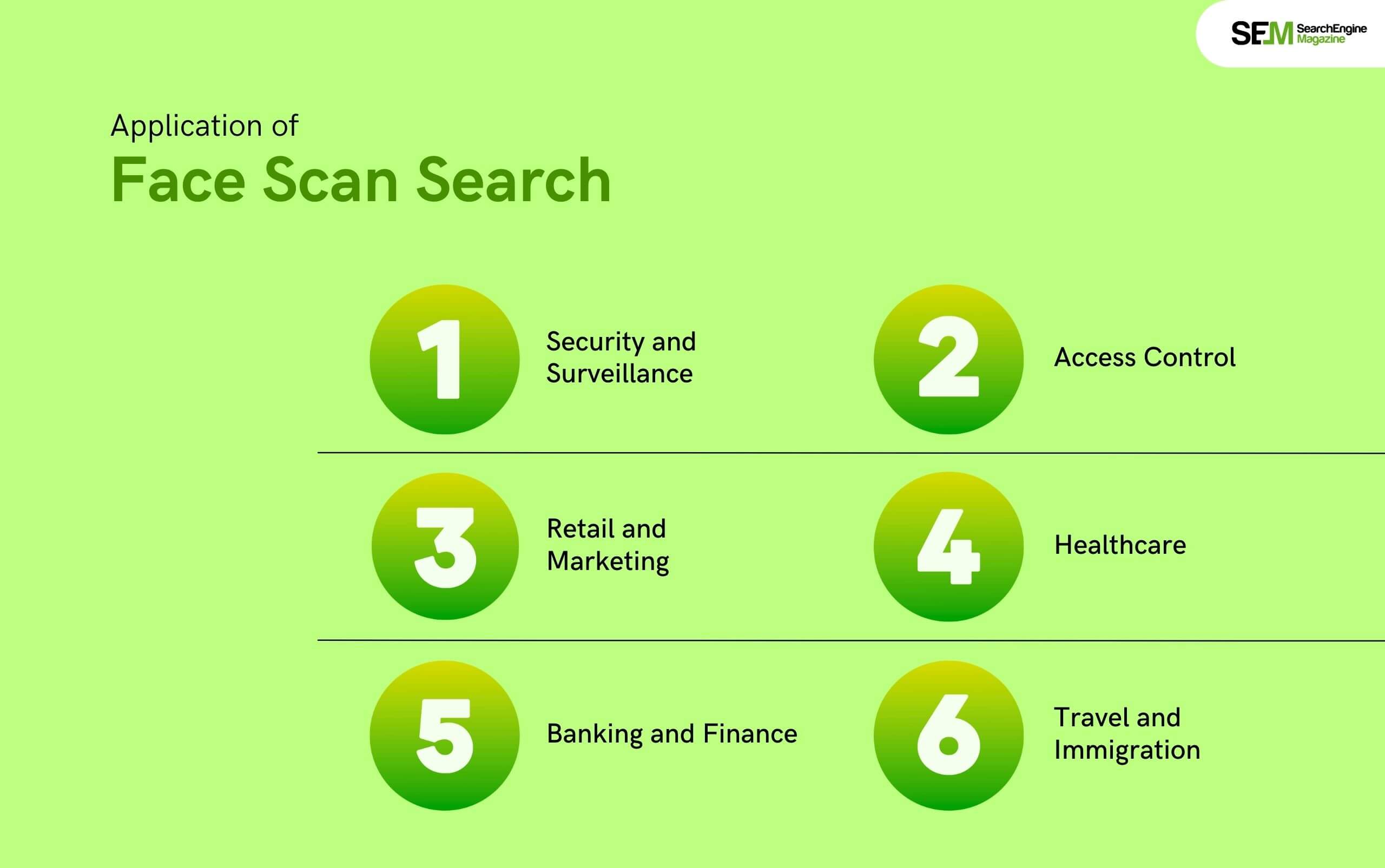
Facial recognition search applied in different firms for different uses, from security to marketing. And the applications fall to the main following ones,
Security is the acknowledged application of facial recognition technology. Applications public and private places-airports, stations, shopping centers, and surveillance.
Among others, where, for example, individuals of interest or a movement of people who are followed must be identified, and security agencies recognize suspects in crimes.
Facial recognition is widely use in access control in both physical and digital environments. In the physical setup, it helps ensure entry into buildings with badges and keys.
Digital setups apply it in unlocking smartphones, laptops, and other gadgets, an alternative and more convenient means of accessing passwords.
Retailers are using facial recognition to improve customer experiences. Brands can get insights into customer sentiment by analyzing facial expressions, which can use to improve marketing strategies.
Some stores even use facial recognition for personalized shopping experiences, offering tailored promotions based on customer preferences.
In healthcare, face recognition aims to improve the patients’ identification systems and make a better administrative structure.
It will possible to monitor patients remotely, and facial responses and biometrics would help analyze the mood and condition of patients for healthcare staff.
Facial recognition is installed in banking networks to ensure sound authentication of finances. Customers now use facial marks, a feature of identification that can be made use of through online banking, which reduces the possible risks of identity theft and fraudulent activities.
Airports use facial recognition technology to hasten boarding and make their grounds secure. The facial recognition system helps the efficiency of the automated passport control system in identifying passengers.
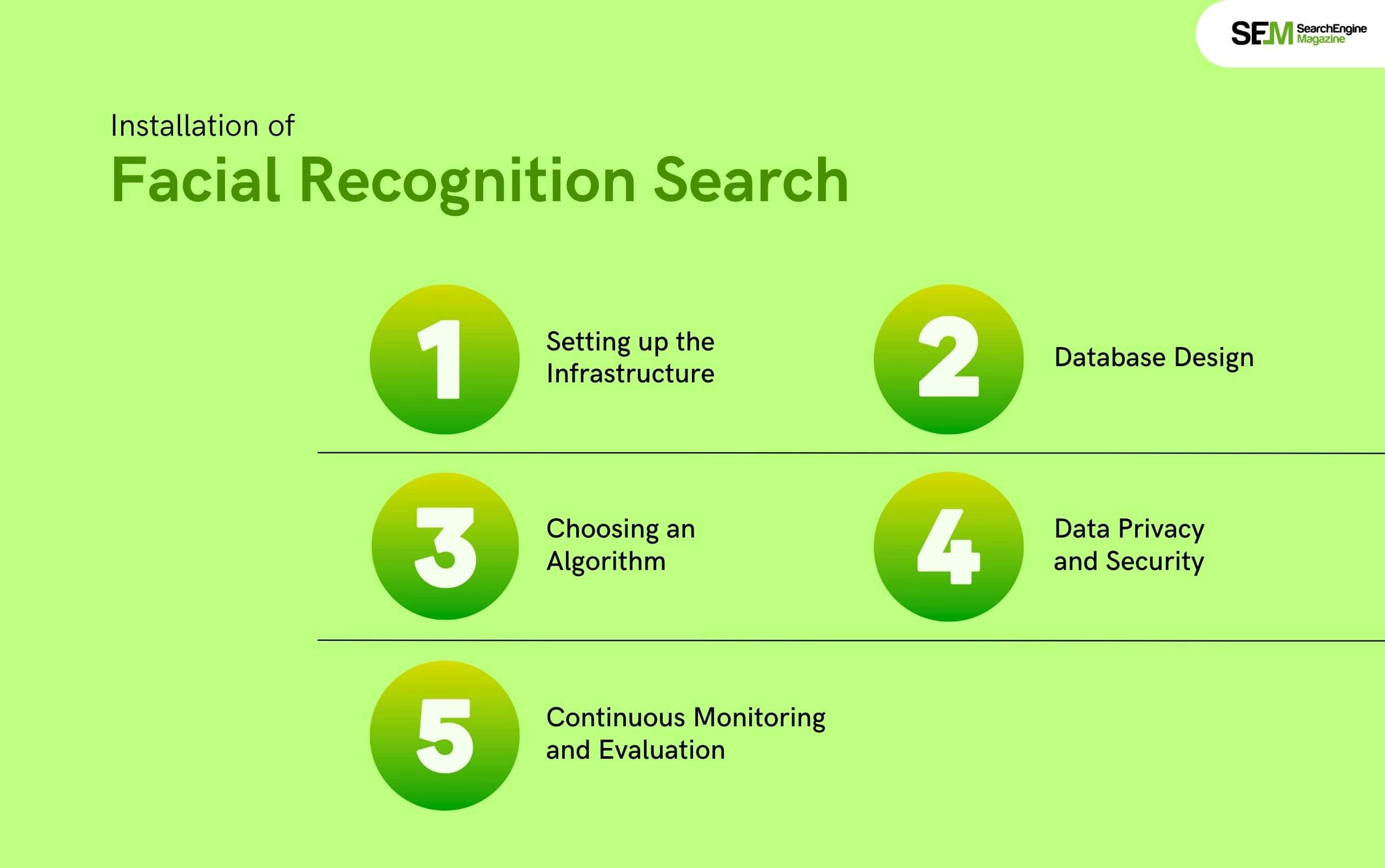
Installing facial recognition search is very strategic to ensure that the installed system is efficient and law-abiding. Important steps involved in the installation include:
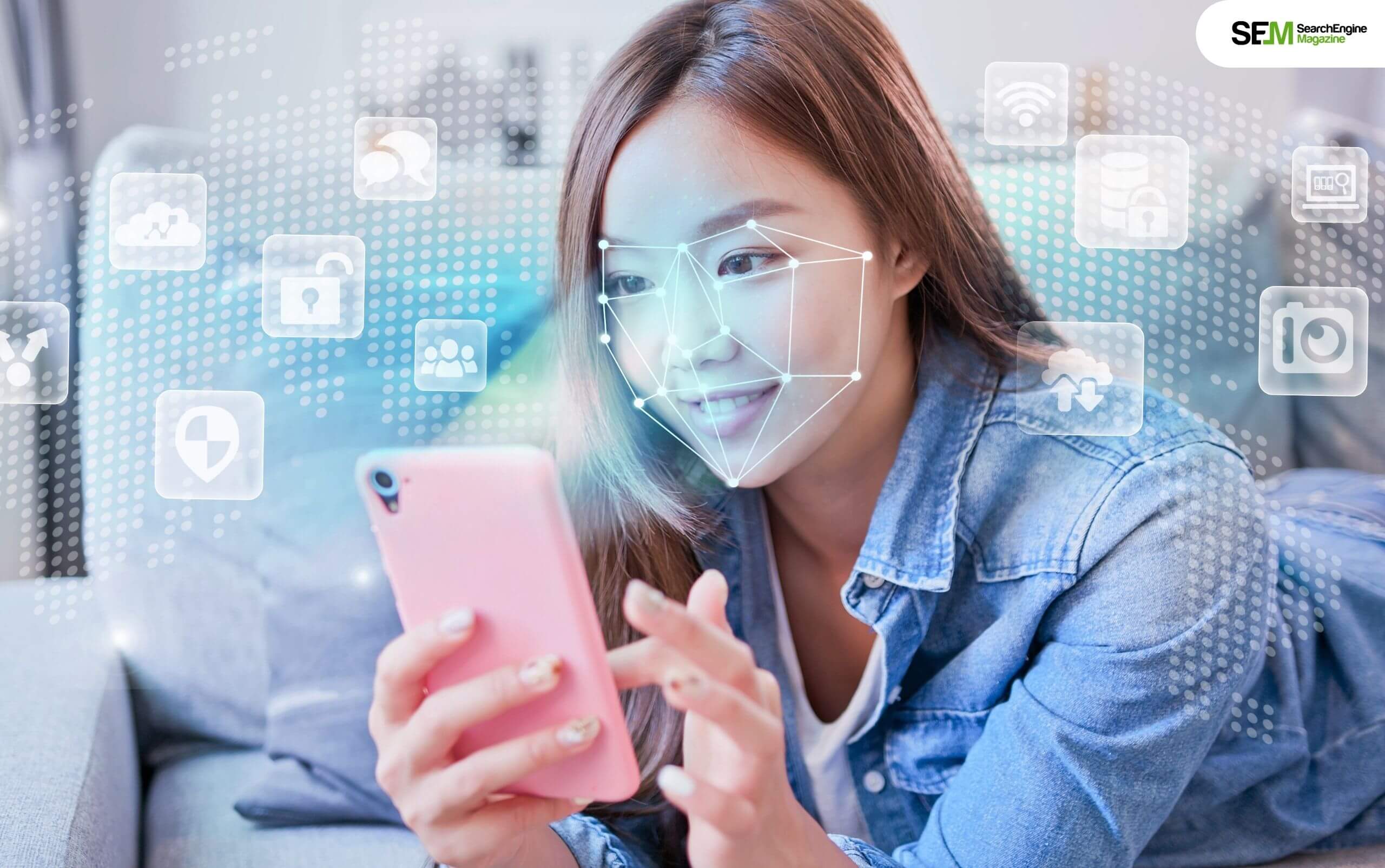
Facial recognition has several benefits; its practice has significant ethical and privacy concerns. The extensive use of facial recognition means that people might be under surveillance without their agreement, causing huge debates on mass surveillance and the deterioration of personal freedom and privacy rights.
Accuracy may influence by factors of race, gender, and age in facial recognition systems, leading to bias and fairness issues. If facial recognition systems are not manage well, they might become discriminatory toward groups.
To address the concerns, governments and organizations must develop strict regulations and ensure that such technology is adopted ethically. Transparency, consent, and accountability will be at the forefront of all deployments.
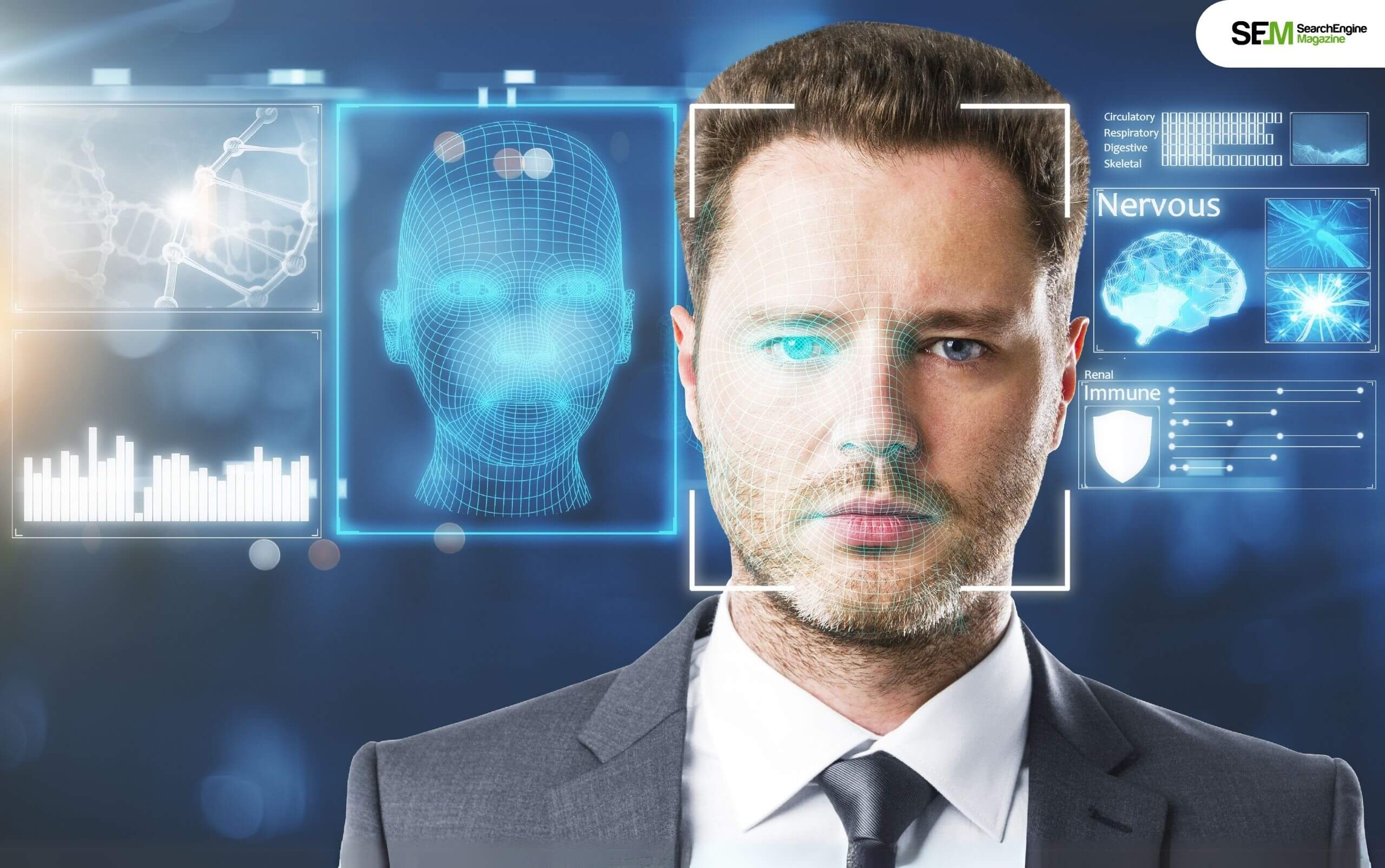
The search for facial recognition holds much promise concerning AI, machine learning, and computer vision, which are always evolving. These are some of the prominent trends:
The technologies in facial recognition searches have changed the identification and authentication process and other industries like security.
Its immense potential to enhance security, customer satisfaction, and work efficiency will give rise to questions their ethics and level of privacy before management.
From its rate of development, the application and regulation toward its use in face recognition technology sharper and more accurate tomorrow it is and is expected to be.
Nabamita Sinha loves to write about lifestyle and pop-culture. In her free time, she loves to watch movies and TV series and experiment with food. Her favorite niche topics are fashion, lifestyle, travel, and gossip content. Her style of writing is creative and quirky.
View all Posts
White Label Link Building: How Does It Work ...
Dec 19, 2025
Marketing Fundamentals: How To Build Your Fir...
Dec 18, 2025
AI SEO: Why It Matters & How To Rank O...
Dec 17, 2025
Best QA Testing Tools For Agile Development T...
Dec 15, 2025
NewzNav.com 2014623980: Is This News Site Wor...
Dec 15, 2025